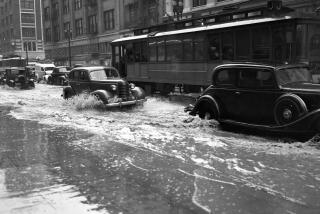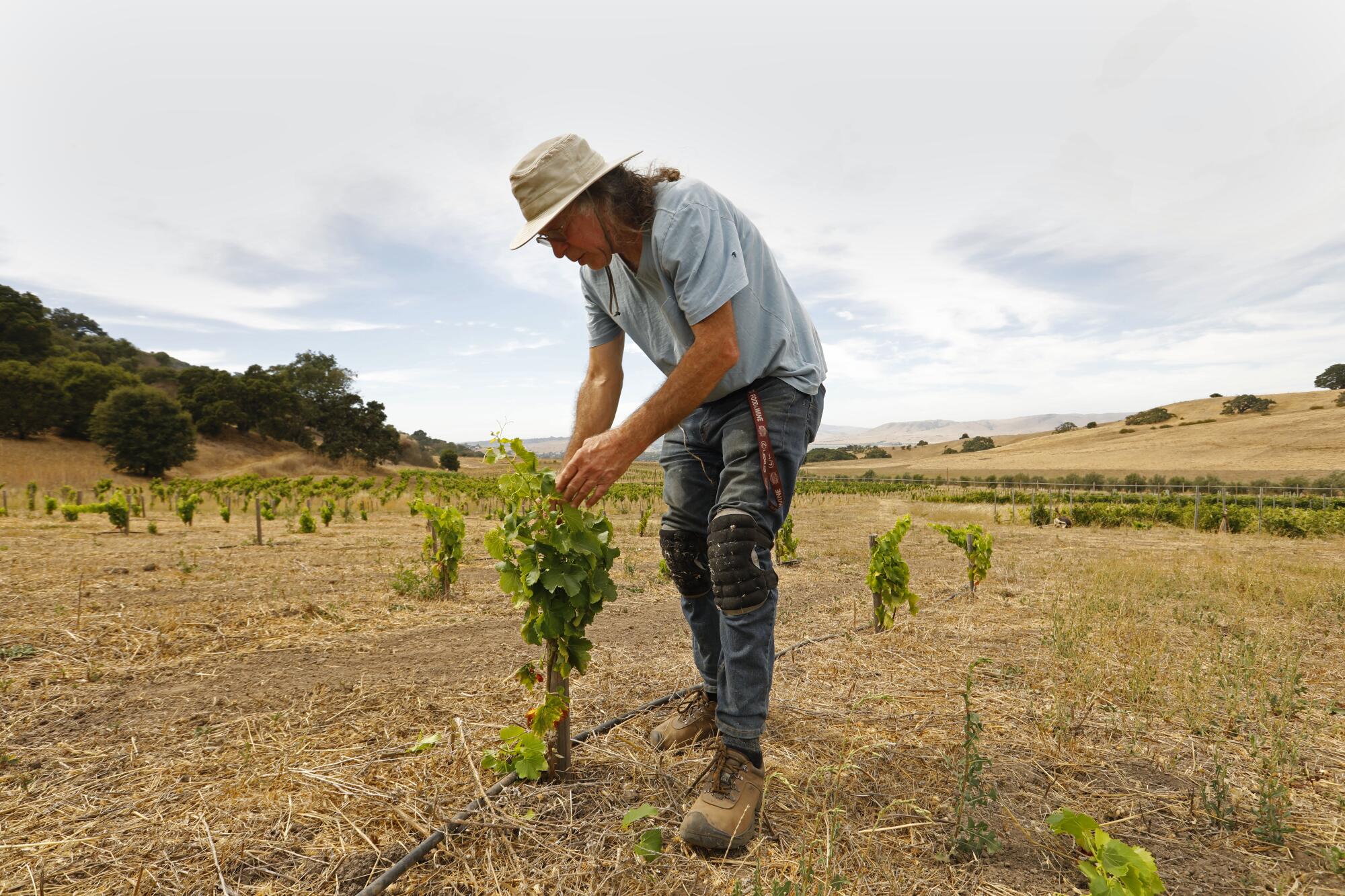
A couple of years ago my wife and I visited the Bonny Doon Vineyard near Santa Cruz to sample the offerings of winemaking savant Randall Grahm. While we were there, Grahm told us something I haven’t been able to forget. It wasn’t nearly as foggy along Monterey Bay as it used to be, he said, and that was worrisome for winemakers.
With each dose of aberrant weather California has had since then, I found myself wondering how California’s wineries were faring and whether the noble grape was becoming a marker — along with sea level rise and deadly wildfires — of an overcooked planet. A few weeks ago I called Grahm to continue the conversation.
For the record:
4:06 p.m. Sept. 5, 2020An earlier version of this story misidentified the winery with the winning red wine at a 1976 Paris tasting. It was Stag’s Leap Wine Cellars, not Stags’ Leap Winery.
“About 25 years ago I started to see substantially less fog, and in the last 20 years, less and less,” said Grahm, and that’s starting to affect California wine.
With more sun and heat, the grape maturation process is rushed, he said, and while it’s possible to still make good wine, it’s harder to get the acid-sugar ratio, pH balance, color and flavor just right. Grapes that he buys “used to ripen maybe the first week of November, and now it’s a good three to four weeks earlier. And that’s not trivial.”
The subtle differences in fragrance and complexity Grahm talks about are beyond my palate grade, but what I do understand is that winemakers are adapting because they have to. For them, climate change is not some abstract, distant worry. It’s creeping into their vineyards right now.
And that’s a big deal. The United States is the world’s fourth-largest wine producer behind Italy, France and Spain, and California produces 80% of the nation’s vino. Retail sales top $40 billion, and the industry employs more than 30,000 Californians directly in growing grapes and producing wine and many more in related jobs. Here, as in other wine-growing regions of the world affected by climate change, there won’t necessarily be less production in coming years. But growers are switching varieties, tinkering with techniques and moving to higher elevations.
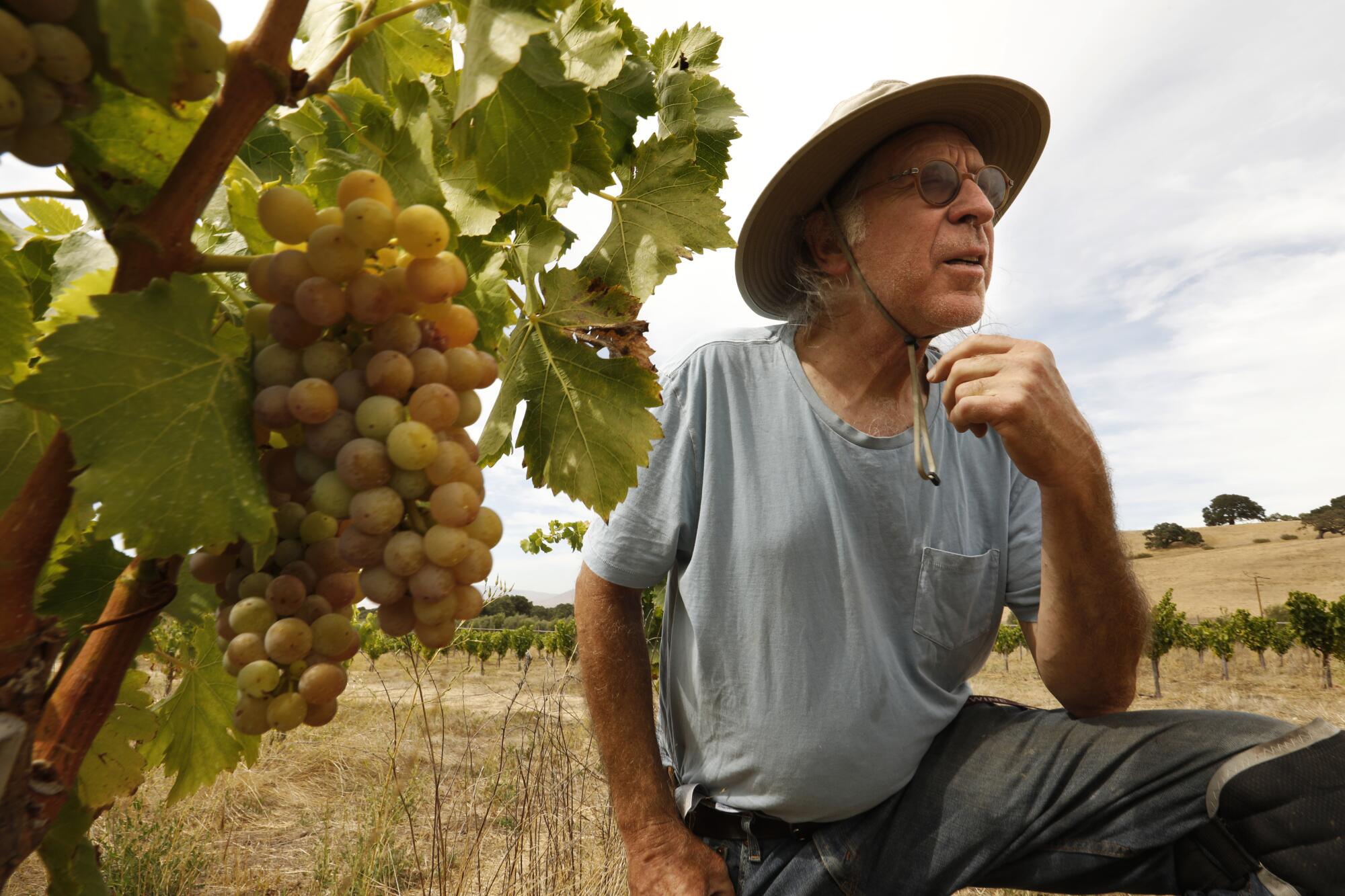
::
After a lot of time on the phone with vintners and climate experts, I took to the highway during the second week of August to see what was happening in the vineyards. I beat the fires and thousands of lightning strikes by a week, but even without an inferno bearing down, what I found was alarming, though I also saw encouraging innovations.
Having grown up in the Bay Area, not far from wine country, I recall hot and breezy summer days as the reliable norm, but definitely not with the kind of lightning storms Northern California is now seeing. On summer excursions to San Francisco from Contra Costa County when I was a kid, we brought jackets because the city was always cool in the summer. On June 10 this year, the thermometer at the San Francisco airport hit 100, the highest temperature on record in the months of June, July and August.
It had been a while since I traveled the Napa Valley wine trail, and I’d forgotten how beautiful it is. Miles of roller-coaster slopes are crocheted with the vines of California’s king of grapes — cabernet sauvignon, often just referred to as cabernet or cab. And it turns out, that’s one of the grapes that may be most imperiled. It doesn’t stand up to extreme heat as well as many lesser-known varieties.
To understand the significance of this, you have to go back to 1976, when a bottle of Napa Valley Cabernet Sauvignon put California indisputably on the international wine map once and for all. The underdog California Cabernets were pitted against the best French Bordeaux in a blind tasting that came to be known as the Judgment of Paris, and a California wine from Stag’s Leap Wine Cellars.
To this day, Napa‘s Cabernet is in demand worldwide. In the United States, it is the top-selling red wine, and the best bottles command stratospheric prices. To suggest that different, cheaper and perhaps less marketable grapes might be the future of Napa Valley is almost an act of heresy. For decades, tourists have flocked to the valley’s tasting rooms to buy bottles that sell for hundreds and even thousands of dollars.
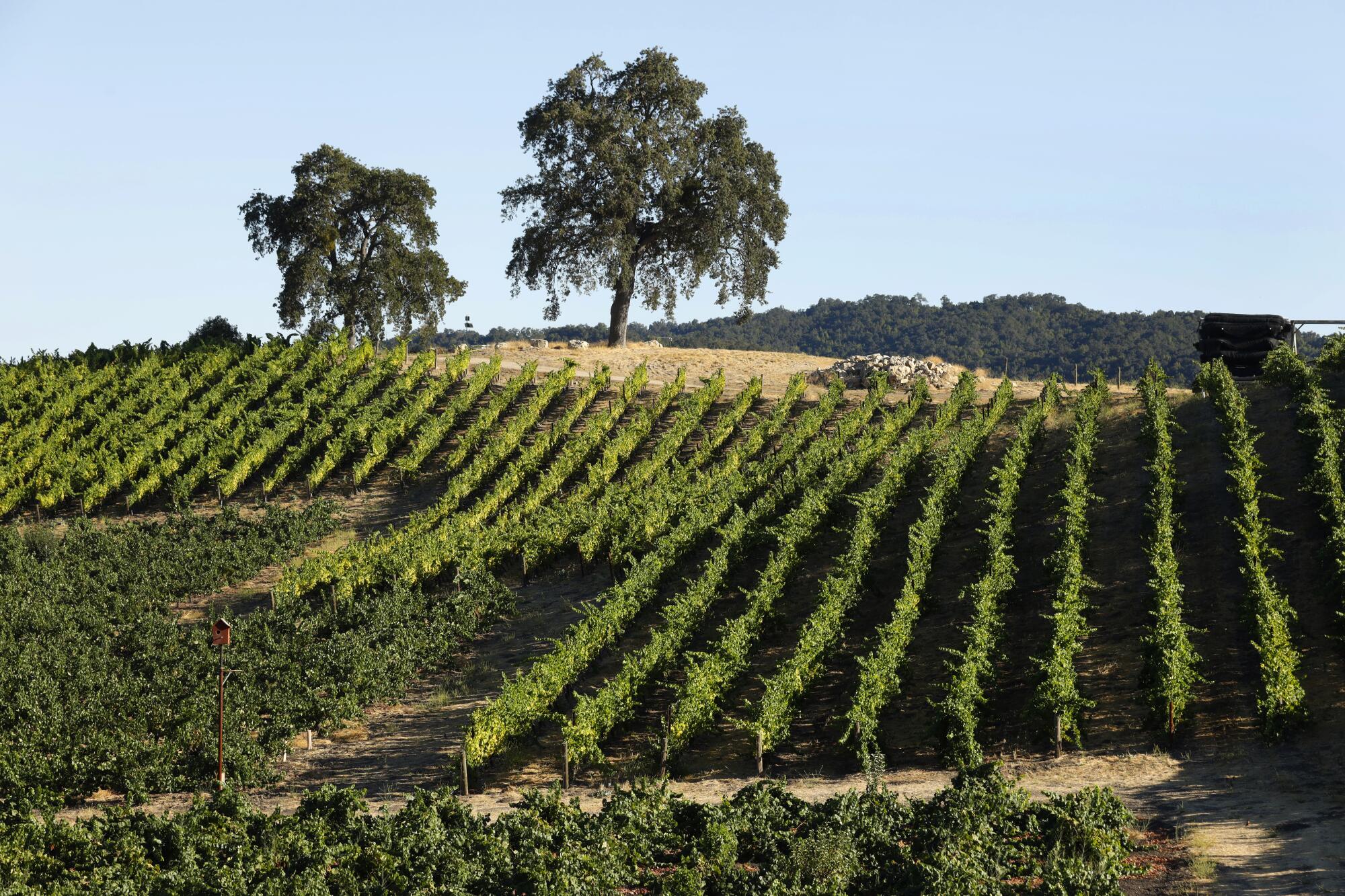
But how long can that go on?
Nobody knows for sure, but as far back as 2011, a Stanford University study predicted that the amount of Northern California land suitable for growing premium grapes could shrink by half as early as 2040, due to increased heat.
That’s bad news for the cabernet grape. Too much heat can mean the berry develops sugar before it has developed its full character, throwing off balance and coloring.
Winemaker Dan Petroski has been clanging his glass to sound the alarm. Petroski, who worked in the magazine business and first got interested in wine at high-end New York lunches with clients, has likened the sun’s escalating assault on Napa Valley’s trophy grape to the slow boiling of a frog.
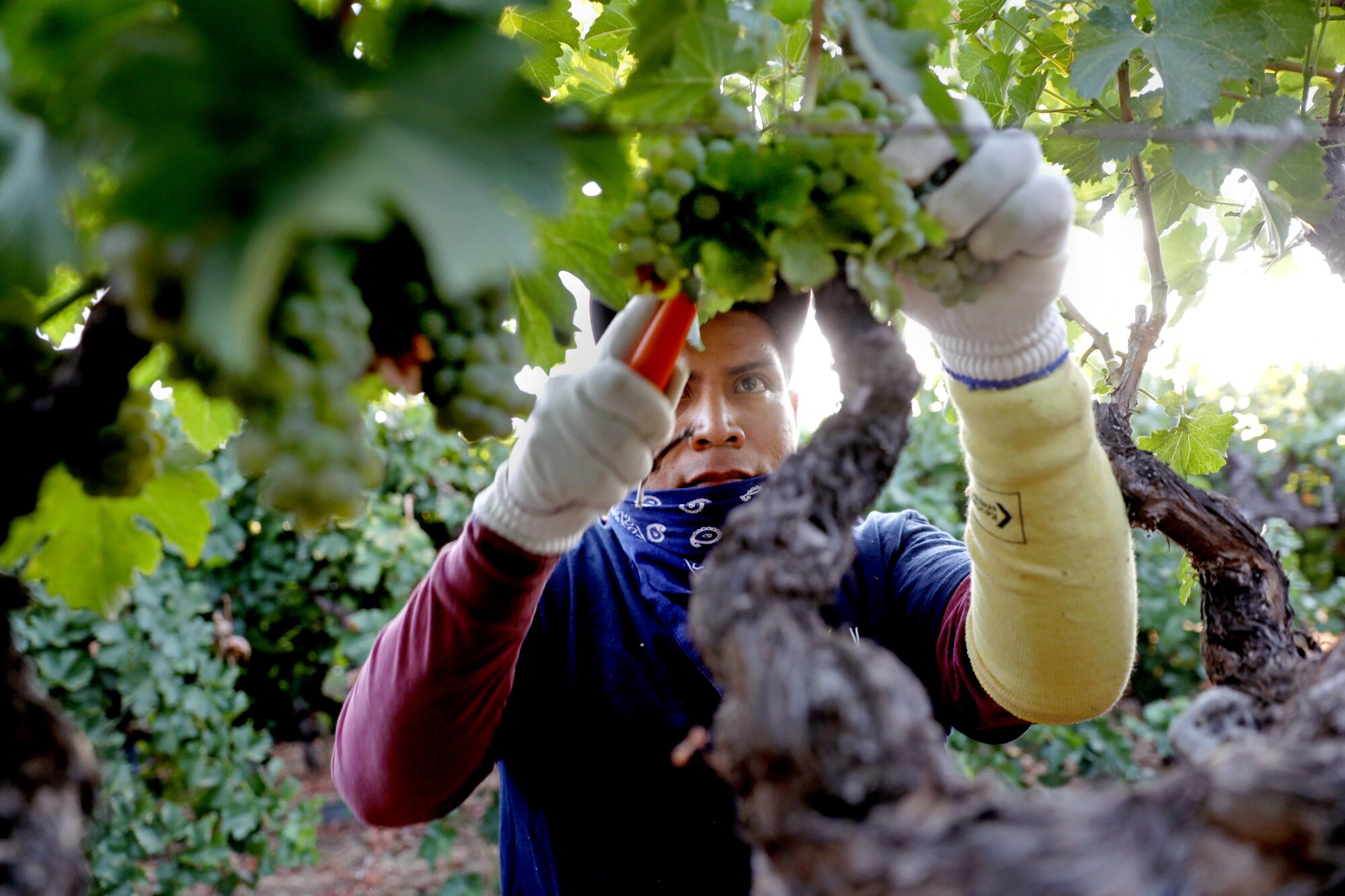
“The changes in climate that are predicted both worldwide and in the Napa Valley mean that in 10, 20, or 30 years’ time…Napa will be a different agricultural region,” Petroski wrote recently for a trade publication. “This is what we must prepare for now.”
::
Petroski loves Cabernet and makes some of the finest in Napa Valley for Larkmead Vineyards, a high-end producer founded in the 1890s. For 10 years, he said, winemakers have been doing things like shading and misting vines, but he sees a day when “there’s no silver bullet that’s going to mitigate climate change.”
And Petroski isn’t just talking and writing about the problem. At Larkmead, he led me to a three-acre research block he has planted with grapes you may never have heard of — grapes he hopes have a better chance of standing up to climate change than cabernet.
Here, surrounded by trellised rows of cabernet vines, he’s got young stalks of aglianico, charbono, tempranillo, shiraz and touriga nacional. Those sturdy reds might not be as familiar tasting as Cabernet, and they don’t have anywhere near the cachet, but they can handle heat.
“We’ll see what works best,” said Petroski, who isn’t entirely wedded to red wine. Under his own label, Massican, he makes Italian-inspired white wine from grapes including greco, pinot bianco, friulano and ribolla gialla, which he says seem to be handling climate change pretty well.
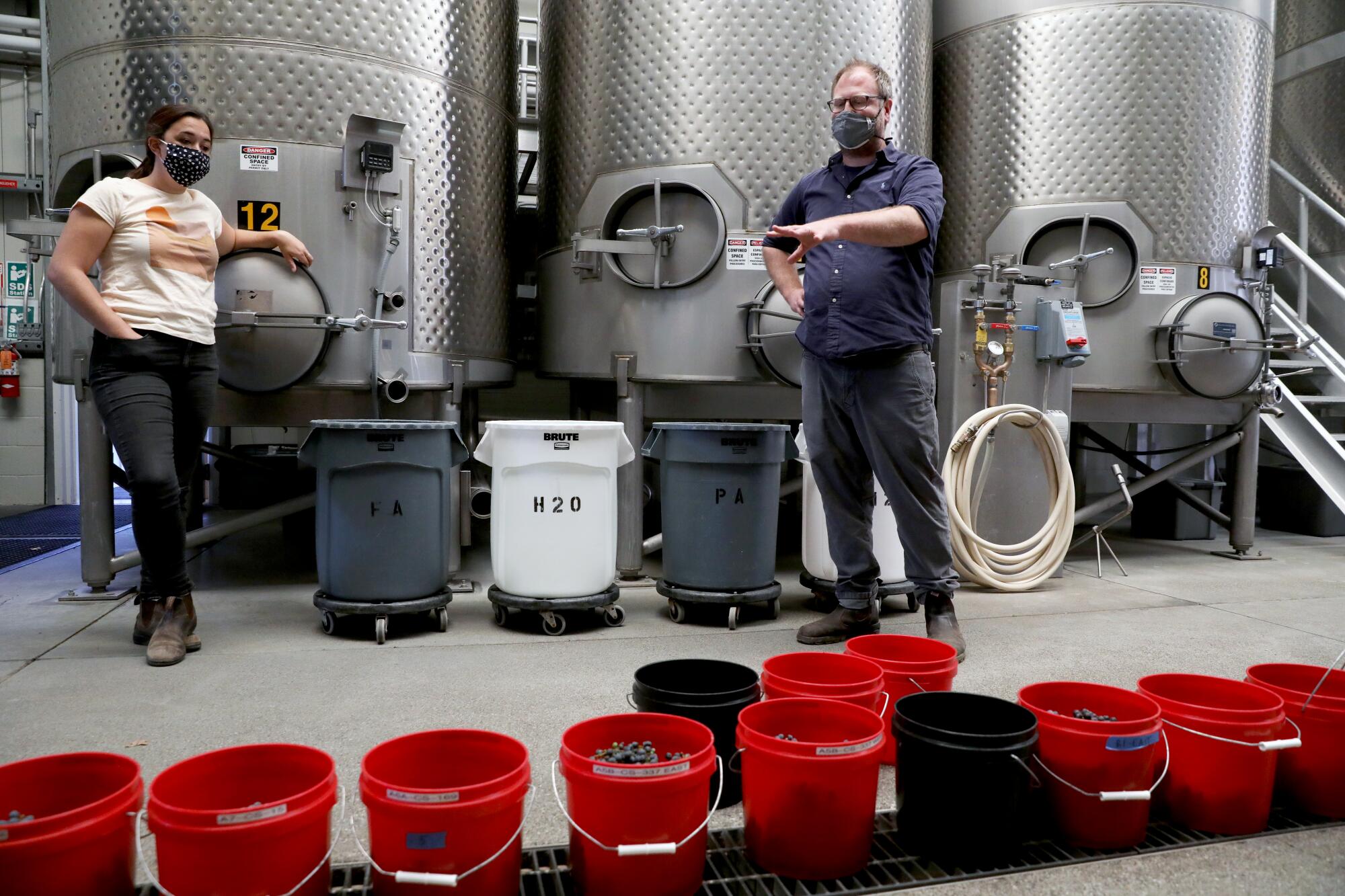
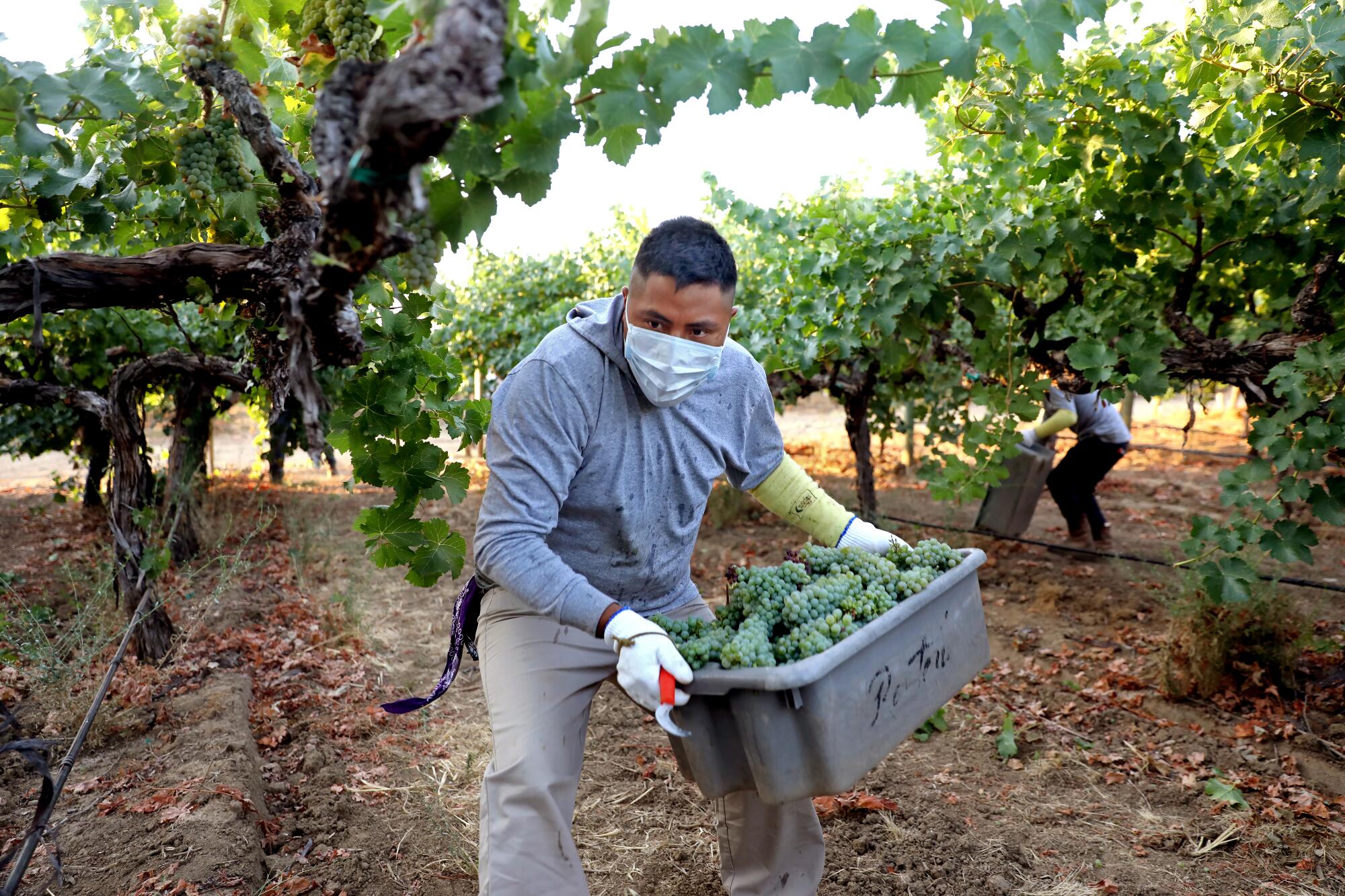
“Maybe cabernet, pinot noir, chardonnay and other grape varieties that built Napa and Sonoma ... in the last 30 years won’t be suitable in the next 30 years,” Petroski said. “We have to adapt to what’s going on in the world. This is not a wine industry problem. This is an agriculture problem. This is a global problem. This is a humanity problem.”
::
Not everyone thinks California’s big-money grapes — cabernet sauvignon, pinot noir and chardonnay — will wither, and some of those grapes still prosper in cooler micro-climates throughout California. At least for now. Just west of Buellton, Kathy Joseph of Fiddlehead Cellars told me fog still pumps through the valley and creates a perfect growing environment for her pinot noir grapes. Jim Clendenen of Au Bon Climat said he’s got the same golden ribbon of marine climate in the valleys near Santa Maria, where his chardonnay grapes grow.
In hotter climates, like Napa Valley, Jon Priest of Etude Wines is using computer models and artificial intelligence to improve growing and irrigation techniques, and vines can be pruned in a way that creates a canopy of shade over grapes.
“The thing we have at our disposal in the U.S. is technology and knowledge, and we’ll find a way to make Cabernet last,” said Kaan Kurtural, cooperative extension specialist in viticulture at UC Davis.
California wine makers are adapting to the increasingly hotter climate using improved farming techniques and by growing grape varieties that require less water.
Or maybe it’s time for California wine drinkers to branch out.
“There are somewhere around 5,000 grapes we can grow and make wine from,” said Greg Jones, a climatologist and director of wine studies at Linfield University in Oregon, and a contributor to the Stanford study that forecast shrinking acreage for certain varieties in California.
If the state had never grown grapes and were to start from scratch today, says UC Davis agricultural water management specialist Daniele Zaccaria, the smartest bet might be to plant the grapes of southern Europe rather than the cab of Bordeaux. In fact, such grapes were planted in California a century ago by European immigrants, but they were all but forgotten after the success of Napa Valley’s trophy grapes.
I asked Zaccaria what wine he thinks he’ll be reaching for in 30 years, when preparing a nice meal and pairing it with a quintessential California wine.
“Probably a Primitivo, a Tempranillo, a Negroamaro, a Nero d’Avola,” he said, naming wines typical of Southern Europe, including Sicily. “Something from areas very similar in climate.”
You won’t find those in many grocery stores today, but they’ve been on the shelves of specialty shops for years. For shoppers interested in branching out, Keith Mabry of K&L Wine Merchants in Hollywood says he’d point out that Primitivo is an Italian cousin of Zinfandel. With Tempranillo, he’d ask if the customer is familiar with wines of Spain’s Rioja region, and if not, he might say it’s a medium-bodied dry red similar to Chianti.
For California grapes and other crops, the climate change problem isn’t just about too much heat, it’s about too little water. But some grape varieties can handle harsh conditions, and Zaccaria said that in his native Puglia in southern Italy, vineyards do well in craggy areas with little rainfall and no irrigation. The roots grow strong, he said, digging deeper into the cracked earth, and the vines can thrive for decades.
::
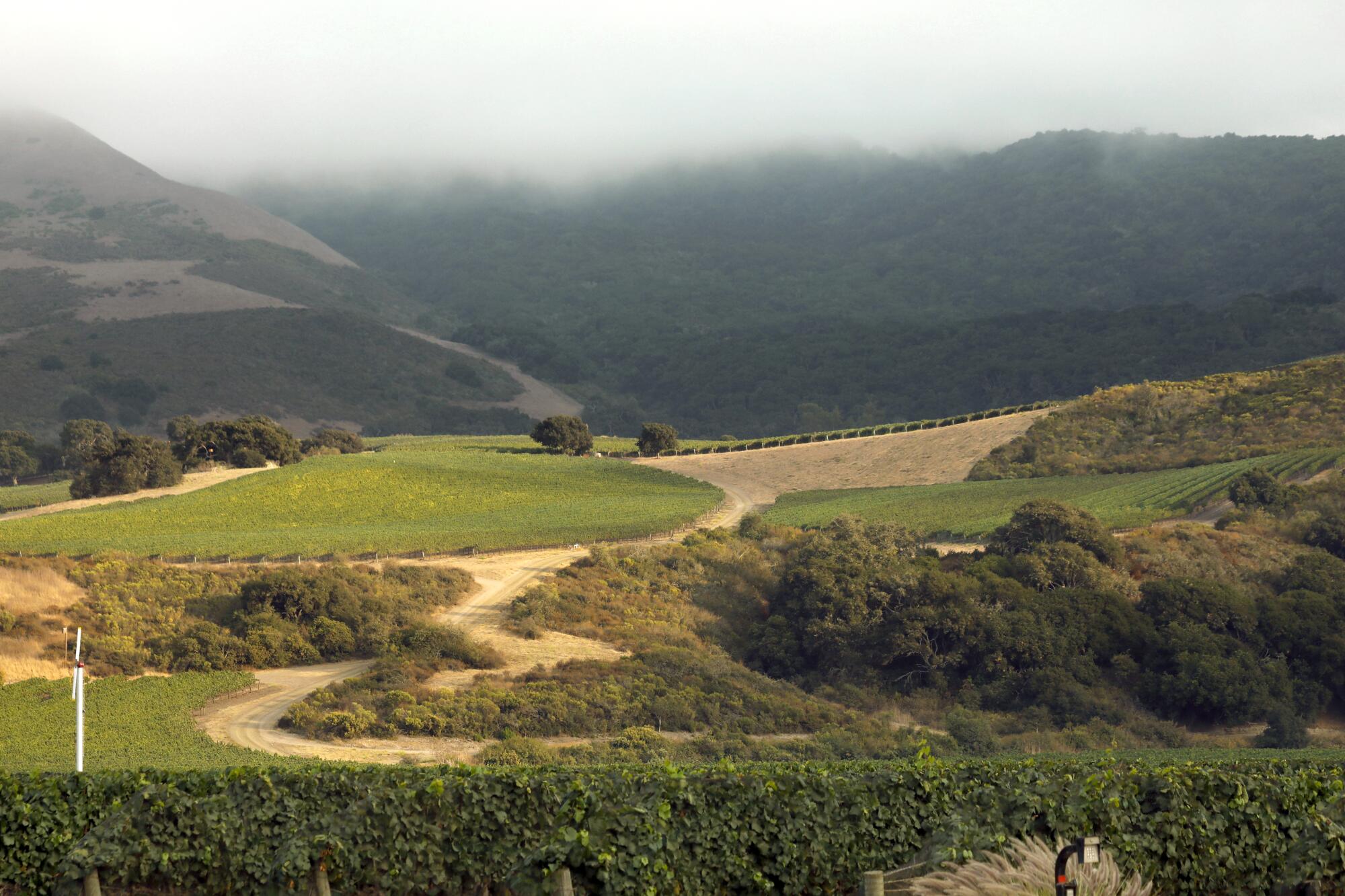
You don’t have to cross an ocean to see what’s possible. I settled instead for a trip to Paso Robles.
Jason Haas did not plan as a young man to get into the wine business, but his father, Robert, was a major U.S. importer of wine and a friend of French winemakers. That was how Jason ended up working at a French vineyard one summer, at 16. He returned two more times, then studied economics, art and archaeology in college before working in tech.
By then, Robert Haas had purchased some land in Paso Robles and planted the southern Rhone Valley grapes he had come to love, including grenache, mourvedre, syrah, roussanne and grenache blanc. In 2002, the elder Haas needed someone with a tech background to help out at his Tablas Creek Vineyard, and his son joined the family business.
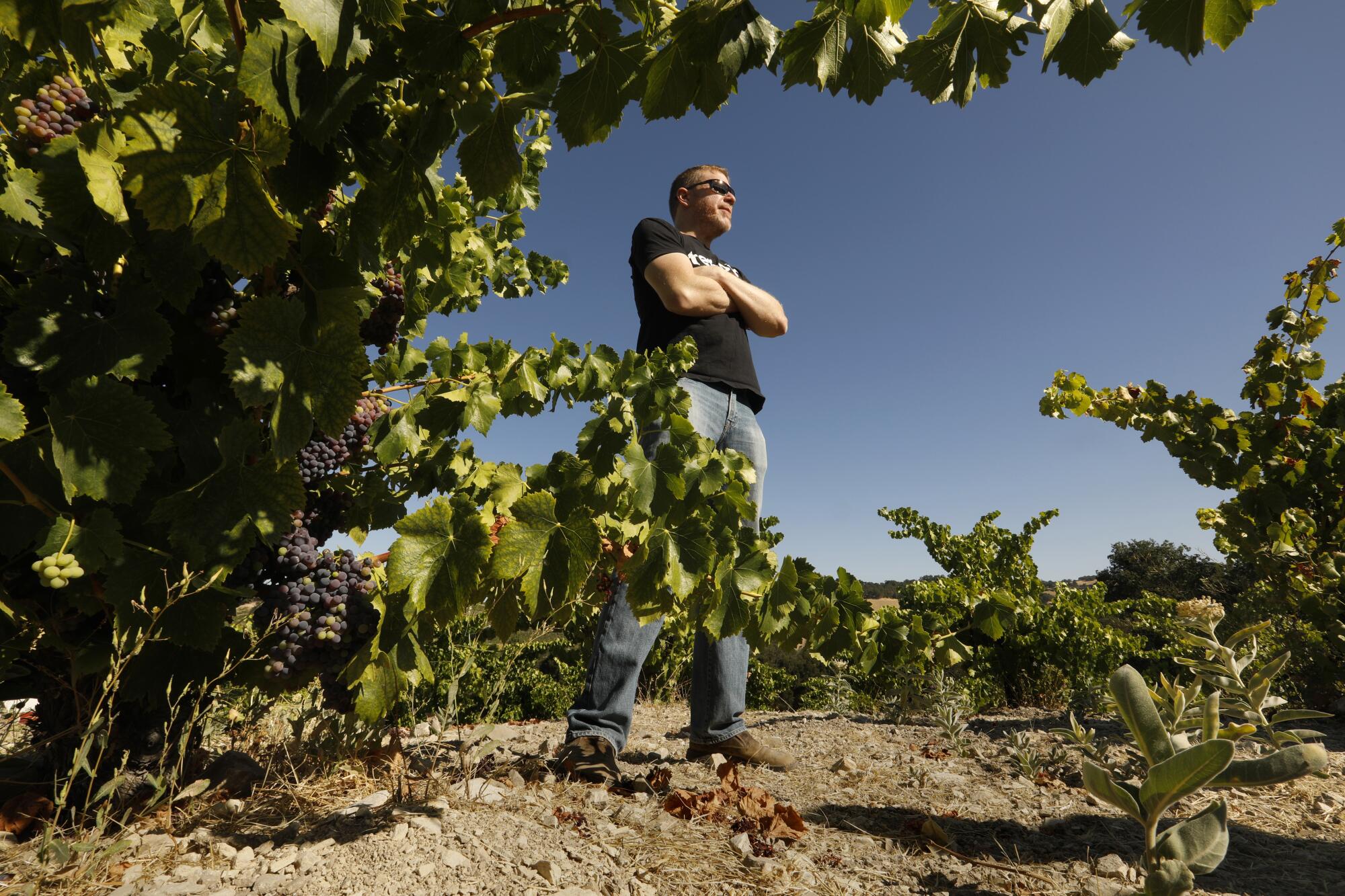
Jason took me to the top of a hill at Tablas where Grenache and Syrah were planted about 15 years ago. They were spaced farther apart than is common, so roots have less competition for water. Haas keeps a herd of 200 sheep as farmhands. They weed the vineyard, their fertilizer helps the soil hold water, and their hooves cultivate rather than compact the earth.
One-third of the vines at the 120-acre winery are dry-farmed. The rest have irrigation but the water isn’t needed when rainfall is close to normal, Haas said. He is now a proprietor of the winery his late father established, and the award-winning wines include the classic Paso blend of Syrah, Grenache and Mourvedre. Two weeks ago, temperatures topped 100 several days in a row, Haas said. But his Rhone grapes handled the heat, no problem.
::
I have nothing against Cabernet Sauvignon. With a steak, or on a cold October night when the Dodgers are losing, that’s the grog I might reach for because it’s a soothing salve, your tongue becomes a flap of peppered jerky in an oak barrel, and you feel like you might grow hair on your head again.
But if the wines of California’s future are from Southern Europe, I’m OK with that. They can be lighter and go better with the chicken, fish and produce that are the essence of California cuisine. My favorite thing about them? They don’t cost nearly as much as the more famous stuff.
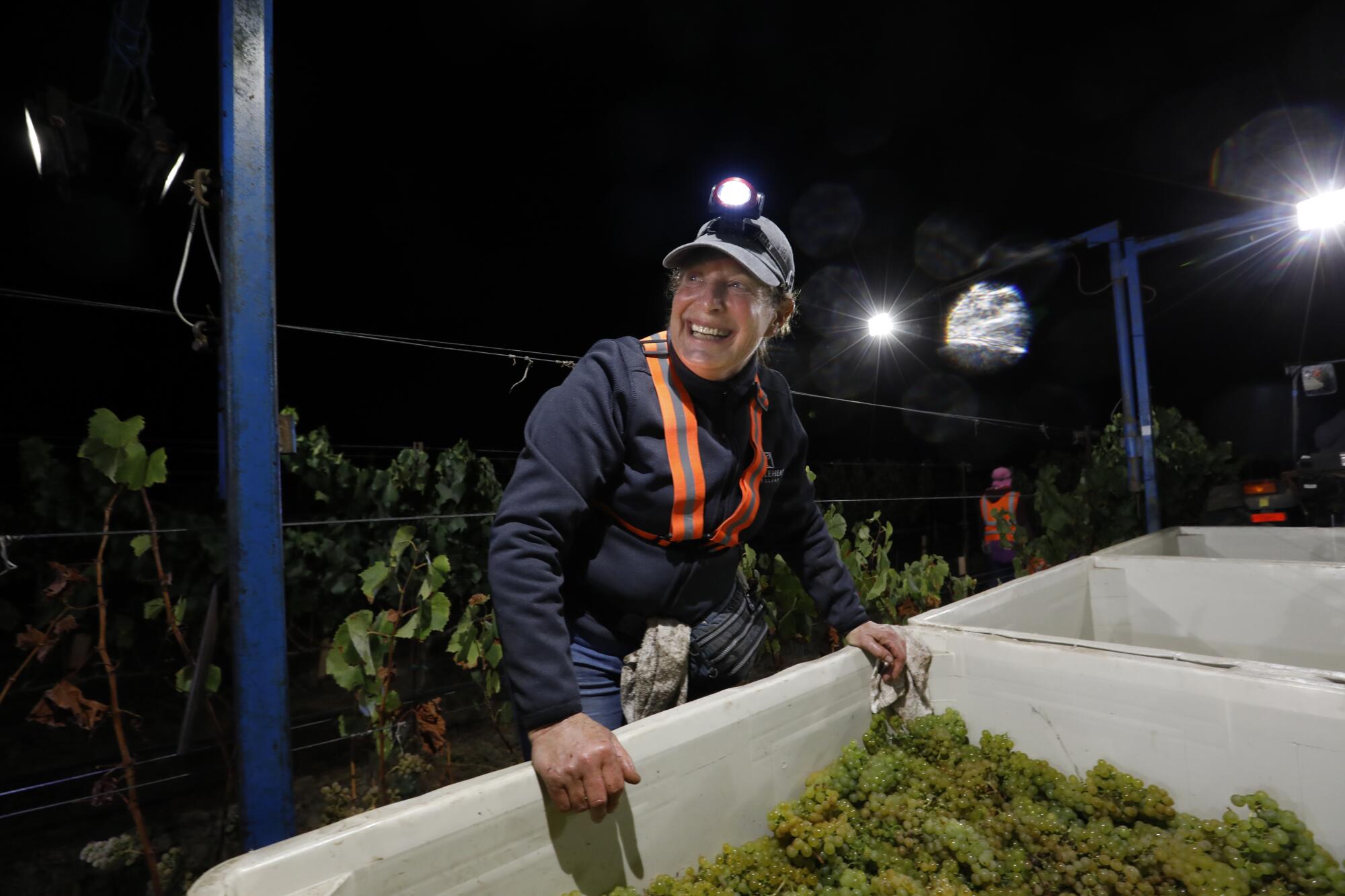
With that in mind, I paid a visit to the man who first got me thinking about the relationship between wine and climate change. I found Randall Grahm on his vineyard in San Juan Bautista, which he said he first saw in a dream, before he knew it existed. Here, on 280 acres of terrain he calls Popelouchum — paradise in the Native American language of the Mutsun people — he is trying to create a new variety of grape that will, among other things, stand up to climate change.
Grahm, 67, grew up in Los Angeles and after college got a job “sweeping the floors” at Wine Merchant in Beverly Hills, where he managed to sample enough of the product to know what he wanted to do with himself. That took him to UC Davis for a plant science degree in 1979, after which he borrowed enough money to buy some land in the Santa Cruz mountains town of Bonny Doon, and set out to make a great Pinot Noir, a wine whose light, earthy complexity he considered worthy of worship.
That didn’t go as well as he’d hoped, so Grahm switched his focus to Rhone varietals, and the results catapulted him to wine industry stardom. In 1989, Grahm landed on the cover of Wine Spectator, which crowned him the Rhone Ranger.
You’ve probably had one or more of his wines. Maybe the Big House Red or the Cardinal Zin, both of which were easy on the tongue and the wallet. Another big hit was the somewhat more expensive Le Cigare Volant, or Flying Cigar. To Grahm, soft red blends are more interesting than the big Cabs of Napa Valley.
But commercial success has never defined nor particularly motivated Grahm, who last year sold Bonny Doon but is still the face of it. He is the piano player who must play like no one else has, the artist who’s never entirely satisfied with a painting. His current obsession is to create a wine that is not an impersonation of any other, but is instead a California original. A wine that is the essence of the place and the climate where it’s grown — a vin de terroir.
“Ultimately what’s very important to me is trying to make something that’s truly distinctive, because there’s so much wine in the world, and the world doesn’t need a carbon copy of something that already exists,” said Grahm.
A cool breeze flowed in from the west, across the berry farms east of Watsonville, as I toured paradise with Grahm. The fog doesn’t make many appearances here, he said, but the grapes he’s seeding won’t require a daily cover of maritime mist.
Here the Rhone Ranger is a lone ranger, growing genetically diverse European vines, some of them obscure, with the goal of breeding thousands of new grape varieties. Ultimately, the married vines might produce a grape the world can’t yet imagine but will one day recognize as a true California original, like the giant Sequoia. This could take years, and might or might not work, but in the Grahm gestalt, this project is about more than wine.
Grahm says he aspires to touch the land as lightly as possible, create disease-resistant plants without pesticides or chemicals, dry farm as much as possible, and create grapes that reflect the elements rather than fight to survive them. In other words, he’s after a grape and a wine built to withstand climate change.
The new grape is a ways off, but at a picnic table overlooking paradise, Grahm brought out some of the first wines he’s grown here — a white blend, a Pinot Noir he said he literally made in a galvanized garbage can, and a silky smooth Grenache that was so good I had to raise a glass.
To paradise, to the planet, to the fog that once was.
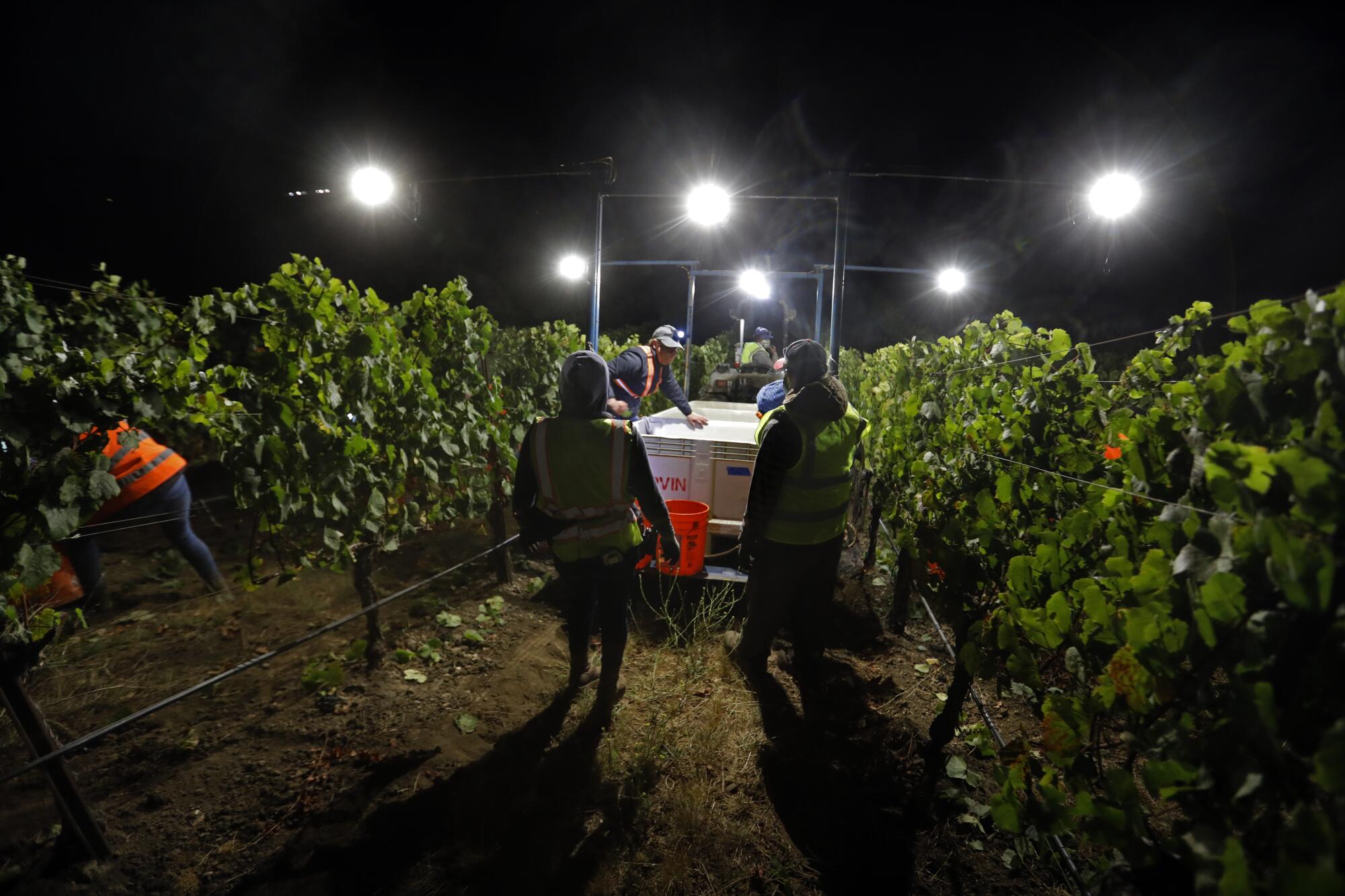
More to Read
Sign up for Essential California
The most important California stories and recommendations in your inbox every morning.
You may occasionally receive promotional content from the Los Angeles Times.




